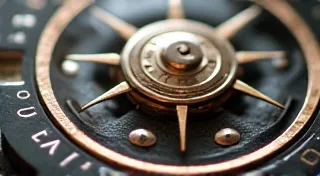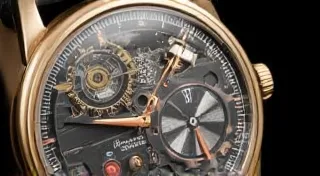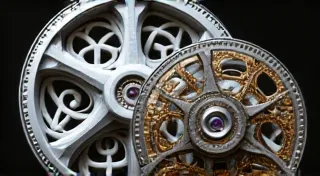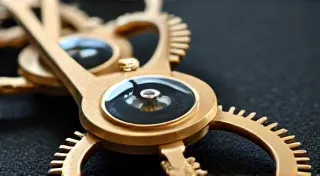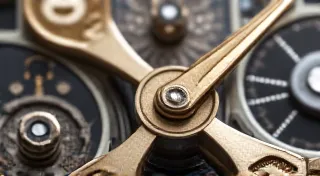The Cartographer of Chronos: Tracing Lost Movements Through History’s Eddies
There’s a peculiar romance in the world of horology – a quiet, almost reverent pursuit that extends far beyond admiring a beautiful dial or appreciating a finely finished case. It lies in the meticulous, often frustrating, task of identifying watch movements. Not the ubiquitous ETA 2824s or the celebrated Patek Philippe calibers, but the movements that linger in the shadows, orphaned from their histories, their makers’ names lost to the relentless march of time. We’re not merely cataloging parts; we're reconstructing narratives lost to the relentless current of time.
Imagine stumbling across a watch, its face scratched, its hands frozen at a forgotten hour. You open the caseback, revealing a complex array of gears, springs, and levers – a tiny, intricate world contained within a few millimeters. It's a beautiful machine, undeniably, but its origins are shrouded in mystery. This, for many collectors and restorers, is the starting point of a quest – a journey into the often-perilous landscape of watch movement identification.
It's a pursuit that resonates deeply with the work of an antique mapmaker, painstakingly piecing together fragments of information to chart unknown territories. Just as cartographers relied on scant clues and local lore, we rely on microscopic markings, obscure serial numbers, and the occasional, tantalizing mention in long-forgotten catalogs. The absence of a maker's name isn’t a dead end; it’s an invitation to dig deeper, to scrutinize every detail, to speculate, and to connect the dots across decades and continents.
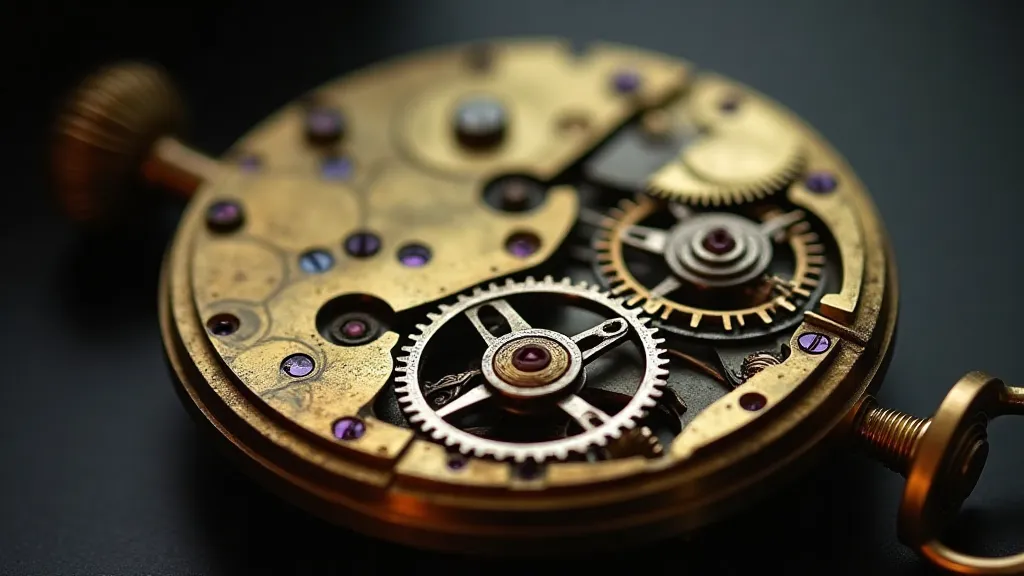
The Ghosts of Factories Past
The disappearance of watch movements is rarely accidental. It's often the consequence of economic shifts, corporate mergers, or the simple fact that a small-town factory, once thriving, succumbed to the pressures of mass production. In the early 20th century, countless independent watchmakers, particularly in Switzerland, Germany, and the United States, produced movements for various brands. These movements were often sold ‘white-dial,’ meaning they were supplied to case makers and dial painters who added the branding and finishing touches. When a company failed, or was absorbed by a larger entity, its movements frequently disappeared from public records, becoming ‘orphaned’ – movements whose origins are almost entirely unknown.
Consider the story of Gustav Becker, a German watchmaker whose movements were once ubiquitous, gracing countless timepieces around the world. While the Becker name survives, the sheer volume of movements they produced, particularly in the early 1900s, means that countless examples exist today with no clear connection to their maker. Identifying these “Becker orphans” requires a detective’s eye for detail: the specific layout of the bridges, the distinctive shape of the escape wheel, the presence of unique markings, even the subtle differences in the engraving style. Successfully navigating such a challenging identification process often depends on understanding the fundamental roles of bridges in watch movements – their function and the nuances of their design, which can provide vital clues to the maker.
The Language of the Tiny Parts
Movement identification isn’t solely about recognizing a maker’s mark. It's about understanding the ‘language’ spoken by the tiny parts themselves. The layout of the gear train, the number of jewels, the style of the balance wheel – these are all clues that can point towards a specific manufacturer or, at the very least, a particular era of production. The advancements in technology, such as the introduction of shock protection or the transition from lever escapements to more modern designs, all leave their mark on the movement’s architecture. Discerning these subtle shifts requires deep knowledge and careful observation.
Many collectors specialize in particular eras or manufacturers. They become intimately familiar with the nuances of a specific movement family, able to spot subtle differences that would escape the untrained eye. This knowledge isn't simply acquired from books; it’s developed through countless hours spent examining movements, dissecting them, comparing them, and sharing observations with other enthusiasts. It’s a community built on shared passion and a deep respect for the craftsmanship of the past. The collective effort of these enthusiasts has been crucial in piecing together information about lesser-known brands and their movements. Sometimes, the lines between brands become blurred, especially with companies like Moya and Tissot which shared components and production techniques, making identification a particularly complex undertaking.
More Than Machines: Stories Etched in Metal
But the pursuit isn’s merely about technical specifications. It’s about connecting with the human story behind the machine. Each movement represents countless hours of labor, the skill of a watchmaker, and the hopes of a company striving to survive in a fiercely competitive industry. Even a seemingly unremarkable movement can tell a story of innovation, resilience, and the relentless pursuit of precision.

I recall a case involving a small, unassuming movement found in a pocket watch purchased at a flea market. Initially, it appeared to be a generic Swiss movement, but a faint, almost invisible marking revealed a name: ‘F.H. Miller, Schaffhausen.’ Further research uncovered a tiny, almost forgotten workshop that produced movements for a handful of local jewelers in the late 1920s. The discovery wasn't about the monetary value of the watch; it was about the thrill of uncovering a forgotten piece of horological history, of giving a voice to a craftsman whose name had been lost to time. These moments underscore the true value of the cartographer's pursuit – it's about more than just mechanics; it's about uncovering the human element behind the intricate mechanisms.
The Joy of Restoration and the Ethics of Collecting
Identifying orphan movements often opens the door to restoration. Knowing the maker allows for the sourcing of replacement parts (if available) and a more informed approach to repair. However, restoration must be approached with a deep respect for the original design and materials. The goal isn’t to “improve” the movement, but to preserve its integrity, to allow it to continue ticking, a testament to the ingenuity of its creator. Often, identifying the original manufacturer is paramount to a proper restoration.
Collecting orphan movements, or watches containing them, also carries a certain ethical consideration. It's not about hoarding rare and valuable pieces; it's about safeguarding a piece of horological heritage, ensuring that these forgotten movements continue to be appreciated and studied. Sharing knowledge and collaborating with other enthusiasts is vital to the collective understanding of these often-enigmatic timepieces.
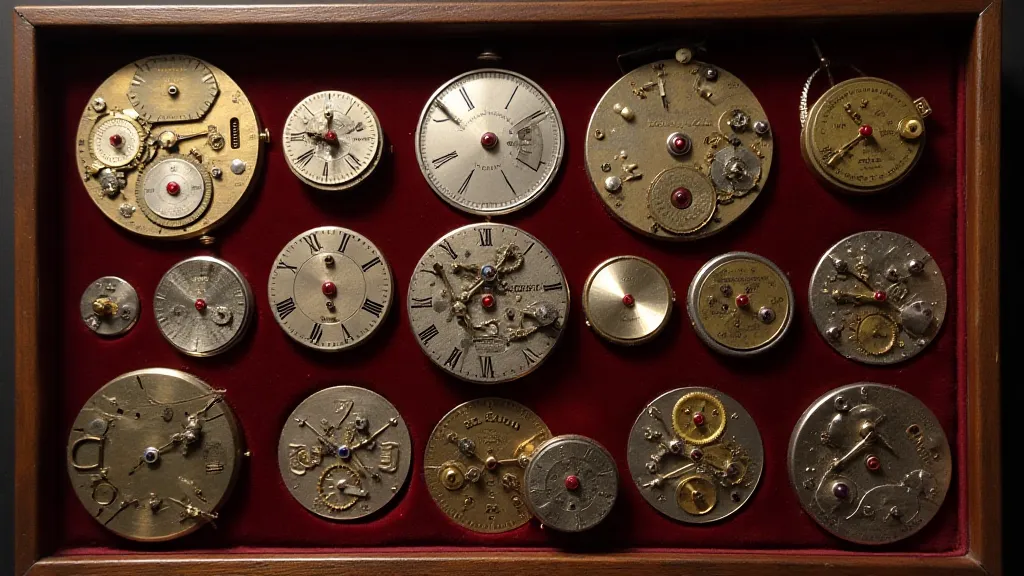
Expanding the Cartographer's Toolkit: Advanced Techniques and Resources
The art of identifying lost movements isn't just about sharp eyes and a steady hand; it’s increasingly relying on advanced techniques and access to comprehensive resources. Digital microscopy allows for an unparalleled level of detail in examining markings and components, revealing nuances invisible to the naked eye. Online databases, forums dedicated to horology, and collaboration within specialist communities are invaluable tools for comparison and verification. The ability to cross-reference serial numbers, bridge layouts, and escapement designs with available records—however sparse—can dramatically improve the chances of unlocking a movement's history.
Furthermore, understanding the broader context of watchmaking history—the economic conditions, the technological innovations, the business practices of the era—provides crucial background information. Knowing that a particular region was a hub for specialized manufacturing, or that a certain company frequently outsourced production, can offer crucial clues. The evolution of escapement technology alone is a fascinating journey, with early lever escapements giving way to more advanced designs, each leaving a distinct mark on a movement’s architecture. The shift between these technologies is often a key indicator of an era.
The Future of Horological Discovery
The quest for identifying orphan movements isn’t a finite task; it's a continuous journey of discovery. As more vintage watches are unearthed and scrutinized, new movements will inevitably emerge, presenting fresh challenges and opportunities. The dedication of horologists worldwide, coupled with advancements in technology and collaborative knowledge-sharing, ensures that the story of timekeeping continues to be revealed, piece by piece. The meticulous work of these "cartographers of Chronos" not only preserves the legacy of past ingenuity, but also enriches our understanding of the enduring power of human craftsmanship.
A Timeless Pursuit
The cartography of Chronos is a lifelong pursuit – a journey of discovery, fueled by curiosity, patience, and a deep appreciation for the artistry of watchmaking. It's a reminder that even in a world obsessed with the new and the innovative, there's a profound beauty and enduring value in preserving the stories of the past. Every unidentified movement represents a challenge, a puzzle waiting to be solved, a glimpse into a world where craftsmanship and ingenuity reigned supreme. And the satisfaction of identifying a lost movement isn't just about filling in a blank space in a catalog; it’s about giving a name, a history, and a voice to a tiny, intricate machine that has weathered the relentless current of time.
